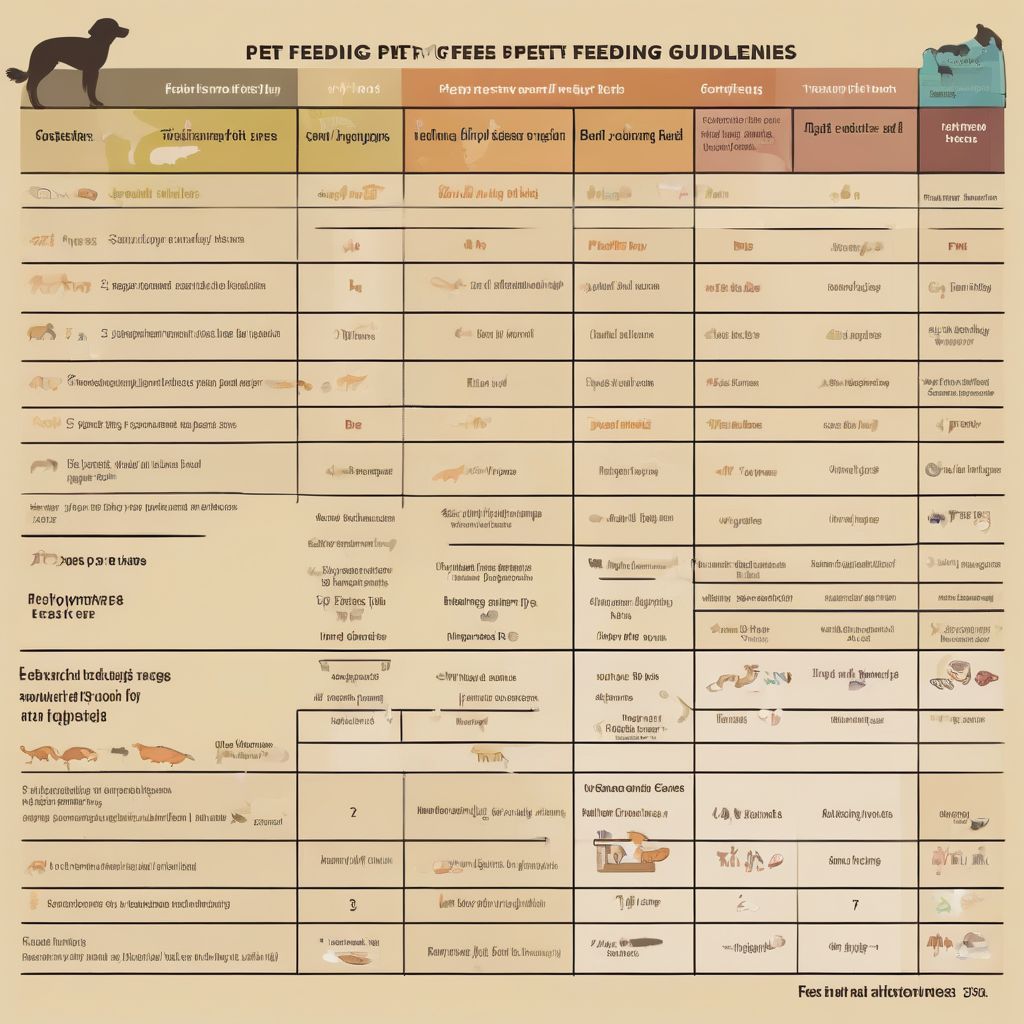Have you ever gazed into your pet’s big, pleading eyes while preparing your own meal, wondering if you’re giving them the best possible nutrition? As a pet parent, you want what’s best for your furry companion, and providing them with a balanced and nutritious diet is a fundamental part of that. Just like us, our pets thrive when they consume the right nutrients in the right amounts. That’s where pet feeding guidelines come in. They offer a roadmap to nourish your beloved companion, ensuring they have the fuel they need to live their best lives.
Understanding Pet Feeding Guidelines
Pet feeding guidelines are essentially a set of recommendations designed to help pet owners determine the appropriate type and quantity of food for their animal companions. These guidelines are not a one-size-fits-all approach. They factor in several key variables to provide personalized recommendations for your furry friend.
Key Factors Influencing Pet Feeding Guidelines:
- Species: The first and most obvious factor is whether you’re feeding a dog or a cat. Canine and feline nutritional needs differ significantly.
- Age: Puppies and kittens have very different dietary requirements than adult or senior pets. Growing animals need a higher calorie intake to support their rapid development, while senior pets often require specific nutrients to support their aging bodies.
- Breed: Small breeds have different metabolic rates and energy requirements compared to large or giant breeds.
- Lifestyle: An active dog participating in agility training will need a different diet than a less active dog who enjoys leisurely walks.
- Health Conditions: Pets with allergies, diabetes, or other medical conditions may require specialized diets to manage their condition.
 Pet Feeding Chart
Pet Feeding Chart
Why Are Pet Feeding Guidelines Important?
You might wonder why you can’t simply follow your intuition when it comes to feeding your pet. While your love and care are invaluable, relying solely on instinct can lead to underfeeding or overfeeding, both of which have health consequences.
Underfeeding can result in nutritional deficiencies, stunted growth (especially in puppies and kittens), weakened immune systems, and a lack of energy.
Overfeeding, on the other hand, is a growing concern and a leading cause of pet obesity. Obese animals are at a higher risk for a range of health issues, including:
- Diabetes
- Heart Disease
- Joint Problems
- Certain Types of Cancer
Adhering to pet feeding guidelines helps you provide optimal nutrition, supporting your pet’s overall health and well-being.
Decoding Pet Food Labels
When you stand in the pet food aisle, the sheer variety of choices can be overwhelming. Each bag or can boasts a long list of ingredients and nutritional claims. Pet feeding guidelines empower you to decipher these labels and make informed choices.
Here’s what to look for:
- Life-Stage: Check if the food is formulated for your pet’s specific life stage (puppy, adult, senior).
- AAFCO Statement: The Association of American Feed Control Officials (AAFCO) sets nutritional standards for pet food. Look for the AAFCO statement to ensure the food is “complete and balanced” for your pet’s life stage.
- Ingredient List: Ingredients are listed in descending order by weight. Look for high-quality protein sources (meat, poultry, fish) as the primary ingredients.
- Guaranteed Analysis: This section lists the minimum percentages of protein, fat, fiber, and moisture. Use this information to compare different foods.
- Calorie Content: This is usually expressed as kilocalories per cup or kilogram of food. Refer to your chosen feeding guide to determine the appropriate daily calorie intake for your pet.
[amazon bestseller=”dog food”]
Creating a Feeding Schedule
Establishing a consistent feeding routine is beneficial for both you and your pet. It helps regulate their digestion, makes it easier to monitor their food intake, and can make housetraining easier, especially for puppies.
- Number of Meals: Puppies and kittens generally require more frequent meals than adult pets due to their higher energy needs and smaller stomach capacity. Most adult dogs do well on one or two meals per day, while cats often prefer multiple small meals throughout the day.
- Timing: Choose feeding times that work best for your schedule but aim for consistency.
- Treats: Treats should make up no more than 10% of your pet’s daily calorie intake. Offer healthy treats as rewards during training or simply to show affection.
Transitioning to a New Food
If you need to switch your pet to a new food, do so gradually to avoid digestive upset. Start by mixing a small amount of the new food with their current food, gradually increasing the ratio of new food to old food over 7-10 days.
Consulting with Your Veterinarian
Pet feeding guidelines provide a valuable framework, but remember that each animal is unique. Your veterinarian is your best resource for personalized guidance. Schedule regular checkups and discuss your pet’s diet with your vet, especially if you notice any changes in their appetite, weight, or overall health.
Nourishing a Lifetime of Love
Feeding your pet isn’t just about filling their bowl; it’s an act of love and a key factor in their long-term health and happiness. By understanding and applying pet feeding guidelines, you can nourish your furry friend for a lifetime of tail wags, purrs, and joyful companionship.
Do you have questions about your pet’s dietary needs? We’d love to hear from you! Share your thoughts and experiences in the comments below. And be sure to check out our other informative articles on pet care for more tips on keeping your furry friend happy and healthy!
